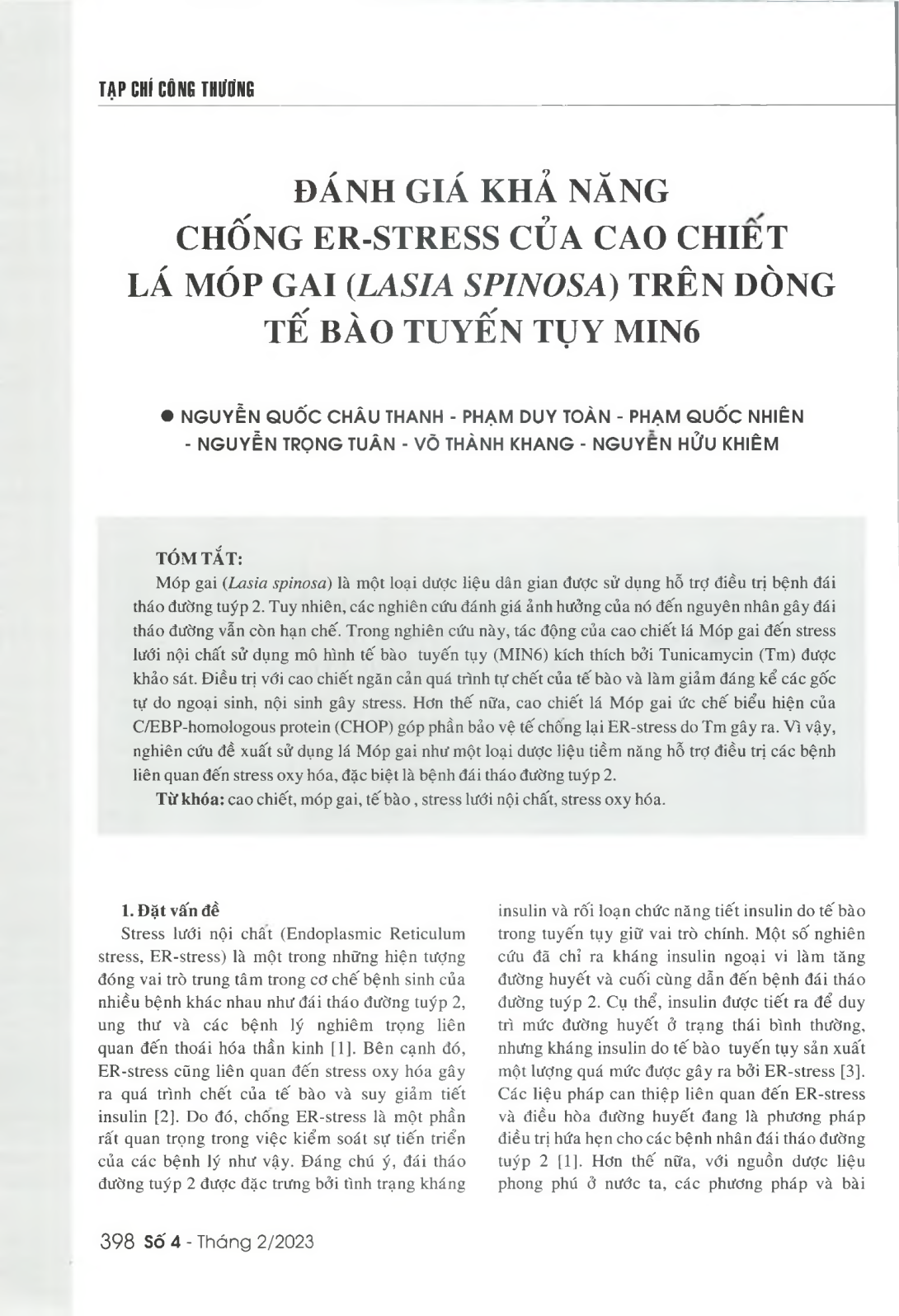
Móp gai (Lasia spinosa) là một loại dược liệu dân gian được sử dụng hỗ trợ điều trị bệnh đái tháo đường tuýp 2. Tuy nhiên, các nghiên cứu đánh giá ảnh hưởng của nó đến nguyên nhân gây đái tháo đường vẫn còn hạn chế. Trong nghiên cứu này, tác động của cao chiết lá Móp gai đến stress lưới nội chất sử dụng mô hình tế bào tuyến tụy (MIN6) kích thích bởi Tunicamycin (Tm) được khảo sát. Điều trị với cao chiết ngăn cản quá trình tự chết của tế bào và làm giảm đáng kể các gốc tự do ngoại sinh, nội sinh gây stress. Hơn thế nữa, cao chiết lá Móp gai ức chế biểu hiện của C/EBP-homologous protein (CHOP) góp phần bảo vệ tế chống lại ER-stress do Tm gây ra. Vì vậy, nghiên cứu đề xuất sử dụng lá Móp gai như một loại dược liệu tiềm năng hỗ trợ điều trị các bệnh liên quan đến stress oxy hóa, đặc biệt là bệnh đái tháo đường tuýp 2.
Lasia spinosa, which is a widely used medicinal herb, is used to support the treatment of type 2 diabetes. However, studies about its influence on the cause of diabetes are still limited. This study aims to explore the effects of Lasia spinosa leaf extract on endoplasmic reticulum stress using a pancreatic P-cell line (MIN6) by Tunicamycin-stimulated. Pre-treatment with the extract inhibits cell apoptosis and significantly reduces exogenous and endogenous free radicals leading to stress. Moreover, the leaf extract suppresses the C/EBP-homologous protein (CHOP) expression, which contributes to cytoprotective activity against tunicamycin-induced ER stress. Therefore, the study proposes the use of Lasia spinosa leaf as a potential medicinal herb to support the treatment of diseases related to oxidative stress, especially type 2 diabetes.
- Đăng nhập để gửi ý kiến
